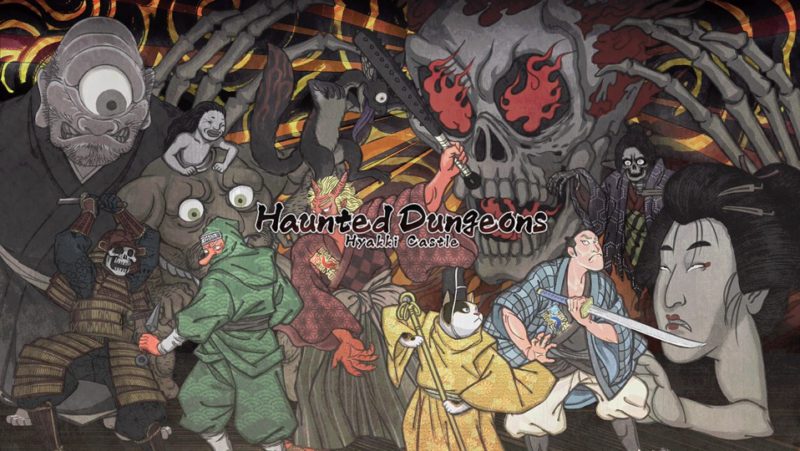
Asakusa Studios’ first-person dungeon crawler Haunted Dungeons: Hyakki Castle made its way onto the Nintendo Switch and PlayStation 4 a few days ago following its debut on Steam last November. There haven’t been a lot of high-profile entries in this venerable genre since Legend of Grimrock II back in 2014, much less the real-time combat variation that Grimrock and Hyakki Castle belong to. For this uncommon novelty alone, Hyakki Castle may intrigue dungeon crawler fans, but for everybody else you won’t miss too much giving it a pass.
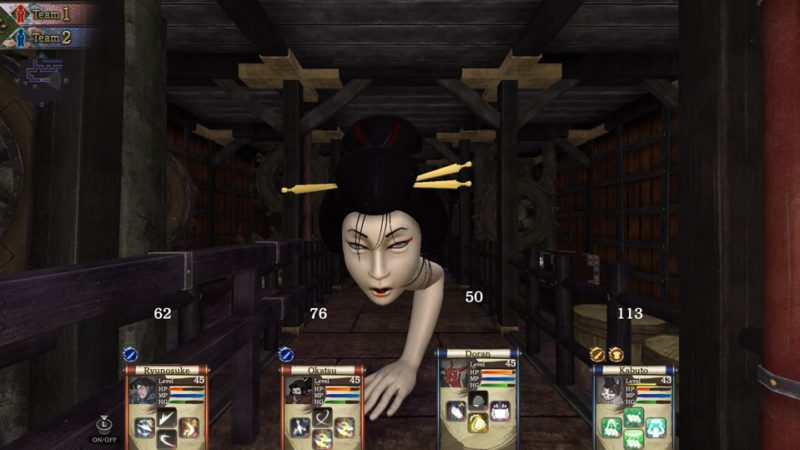
Hyakki Castle has three major qualities that help distinguish it from other first-person dungeon crawlers. It features real-time combat, making it something of a rare treat for genre fans, introduces a clever take on this real-time combat system by allowing party members to split up, and has a medieval Japanese setting complete with monsters (yokai) of cultural myths. Outside of these things, however, much of the genre staples are present and given little treatment beyond the absolute basics. The player guides a party of four characters through several floors of a dungeon (a tower in Hyakki Castle’s story), navigating large, labyrinthine floors that occasionally require solving puzzles by stepping on switches, pulling levers, and avoiding traps while fighting roaming creatures. When fighting monsters, the player can move their party to dodge attacks and has to swap between characters individually to give attack orders before the enemy readies another strike.
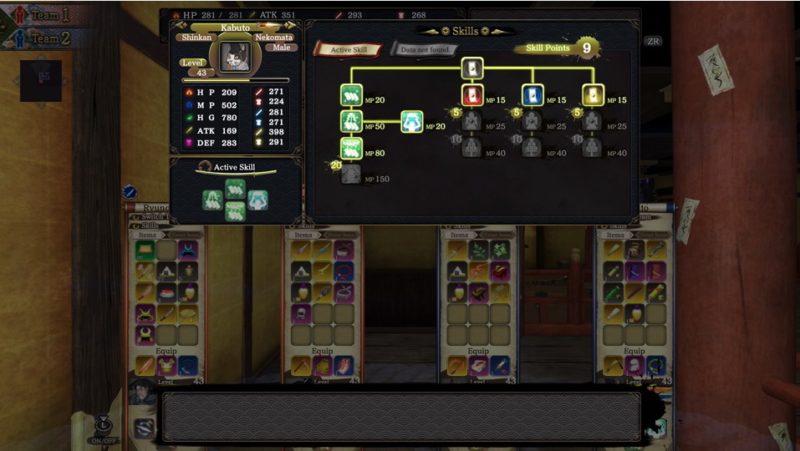
Not every game in a given genre needs to set the world on fire with innovation; a solid refinement of existing ideas and mechanics is also admirable. Hyakki Castle attempts one notable innovation: allowing the player to divide their party members into two teams, and leaves everything else to tired and familiar conventions. This places the game in an odd position of being neither innovative nor refined enough to excel as a trailblazer or a student of its genre. The tactical possibilities of being able to control two smaller groups of heroes in the dungeon to solve puzzles and flank enemies is refreshing, but the game doesn’t invest in these possibilities beyond basic puzzles much of the time. The developers’ creativity is being constrained by an unwillingness to stretch genre conventions further; the conservative and innovative aspects of the game’s design struggle against each other. The party doesn’t usually need to stay divided for very long to solve puzzles that specifically utilize the splitting mechanic before they can be safely reunited, and the narrow, claustrophobic corridors of the dungeons don’t often allow effective flanking attacks or ambushes in combat.
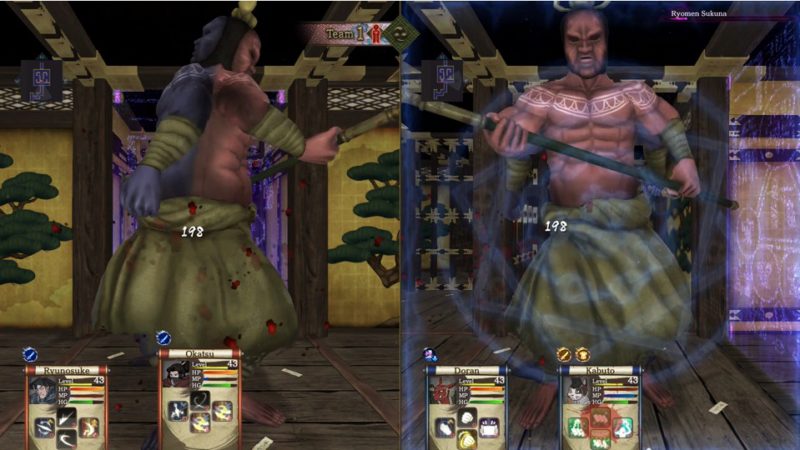
When not taking advantage of its more creative ideas, Hyakki Castle is about as conventional a first-person dungeon crawler as it gets. The Edo Period Japanese aesthetic is interesting and allows for a variety of exotic monsters and enemies, but in practice they mostly behave in ordinary ways. Most enemies slowly wander around and once in contact with the player’s party on the grid-based map, attack repeatedly in a simplistic manner. Some enemies do break the mold and take advantage of the player’s ability to divide and conquer: there’s a cyclopean giant with a little imp on his back that can attack both directly in front of itself, or chuck bombs twice that distance to damage anybody split off and hiding behind your front line heroes. And one of the bosses is a large Oni divided between a red face and a blue face: neither “front” can be harmed, requiring the player to split their party up to attack the boss’ sides to deal damage. These types of encounters show the game in its best light.
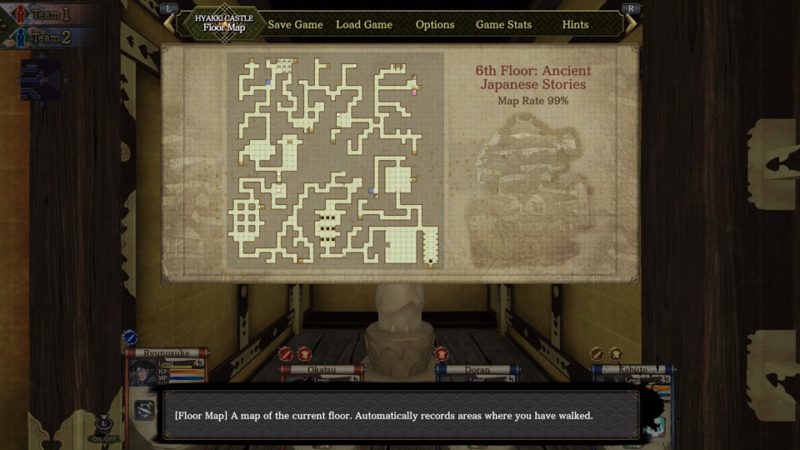
Less impressive are the limited class and race options for customizing your party of heroes. There are four races to choose from (Human, Tengu, Oni, and Nekomata) and four classes (Samurai, Ninja, Sohei, and Shinkan), which roughly correspond to Well-rounded Fighter, Glass Cannon Fighter, Tanky Monk, and Mage. The races don’t have a lot of impact beyond some minimal advantages/disadvantages to certain stats like health or defense. The skills available to unlock for each class are also quite sparse and mostly focus on attack or defense buffs, elemental protection or damage (Fire, Water, and Earth, which have a rock-paper-scissors relationship), or healing. Since classes are unable to mix and match skills, the number of viable party configurations is pretty limited. The Samurai is a reliable warrior who won’t die instantly, the Ninja deals high damage but dies quickly, the Sohei can absorb lots of damage and draws hostility away from allies, and the Shinkan mostly heals or throws elemental spells. It’s unlikely that you’d want to go without a Shinkan healer or at least a couple reliable damage dealers due to the preciousness of healing items. At the very least, more class options would make party customization a more thoughtful process, but as it stands there’s not a lot of room for imagination outside of trying an intentionally awkward hero combination for the sake of challenge.
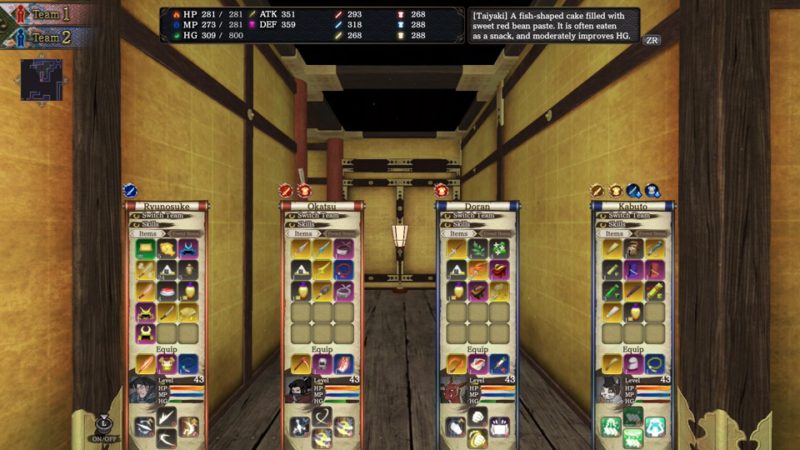
Both story and sound design mostly take a backseat to the gameplay, which isn’t unusual for dungeon crawlers. Narrative isn’t particularly important or missed in Hyakki Castle, but the surprisingly minimal music and sound effects don’t do the game favors. The main menu and certain cutscenes take advantage of female Japanese vocals singing an eerie lament that sets an appropriate horror and cultural mood. Once in the game itself, though, there’s almost no ambient sound or music and the sound effects tend to be unmemorable. There’s an argument to be made for a game foregoing soundtrack and opting for more quiet in favor of emphasizing a sense of isolation and atmosphere. It’s hard to say whether that argument works in Hyakki Castle’s favor, or if the game misses the mark too much and just lacks atmosphere and presence due to its relative silence.
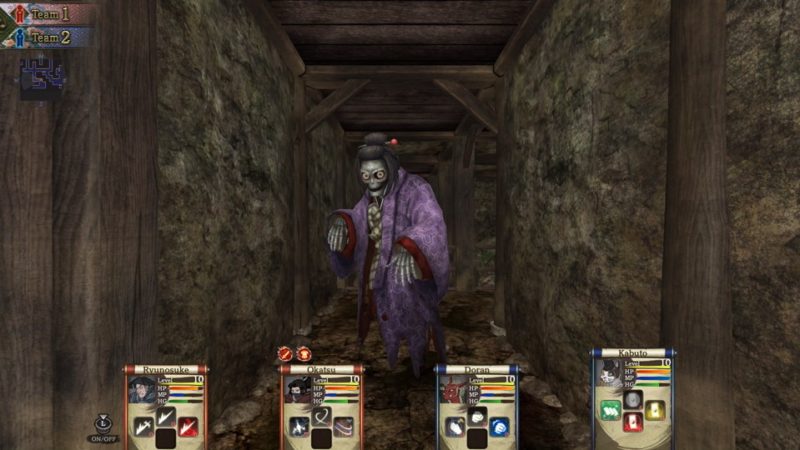
Haunted Dungeons: Hyakki Castle is ultimately a standard entry in the first-person dungeon crawler genre. Since it belongs to a fairly rare subtype: first-person with real-time combat, being standard isn’t so bad, really. But it neither excels as a standard dungeon crawler nor takes advantage enough of its most creative ideas to attract new fans to the genre or completely win the hearts of existing fans. It’s an interesting, niche addition to the Switch’s library that fleshes out its genre variety more, but is unlikely to jump onto many people’s favorite games lists.
6.5/10
Here is the Haunted Dungeons: Hyakki Castle Console Launch Trailer:
Haunted Dungeons: Hyakki Castle is now available digitally on both platforms via the PlayStation Store and the Nintendo eShop for Nintendo Switch.
Nintendo Switch Review
-
Overall Score - 6.5/106.5/10
I've been gaming for 22 years, ever since my mom picked up a secondhand NES, and I've played on just about every gaming platform out there since. I think video games are one of most innovative and artistic mediums in the world today, and I'm always curious how developers will surprise me next.





More Stories
Nintendo Download Update (December 18, 2025)
DAIMON BLADES Preview for Steam Early Access
ReStory Preview for Steam